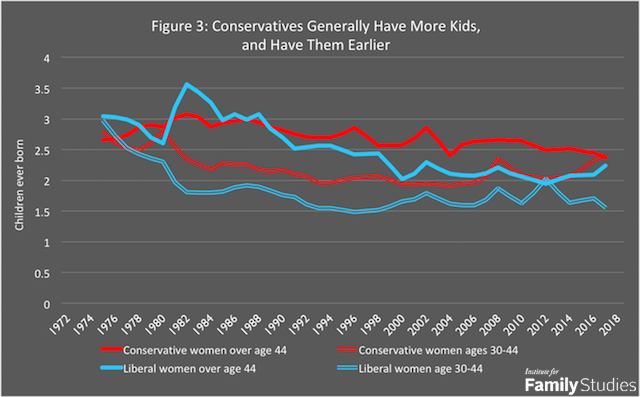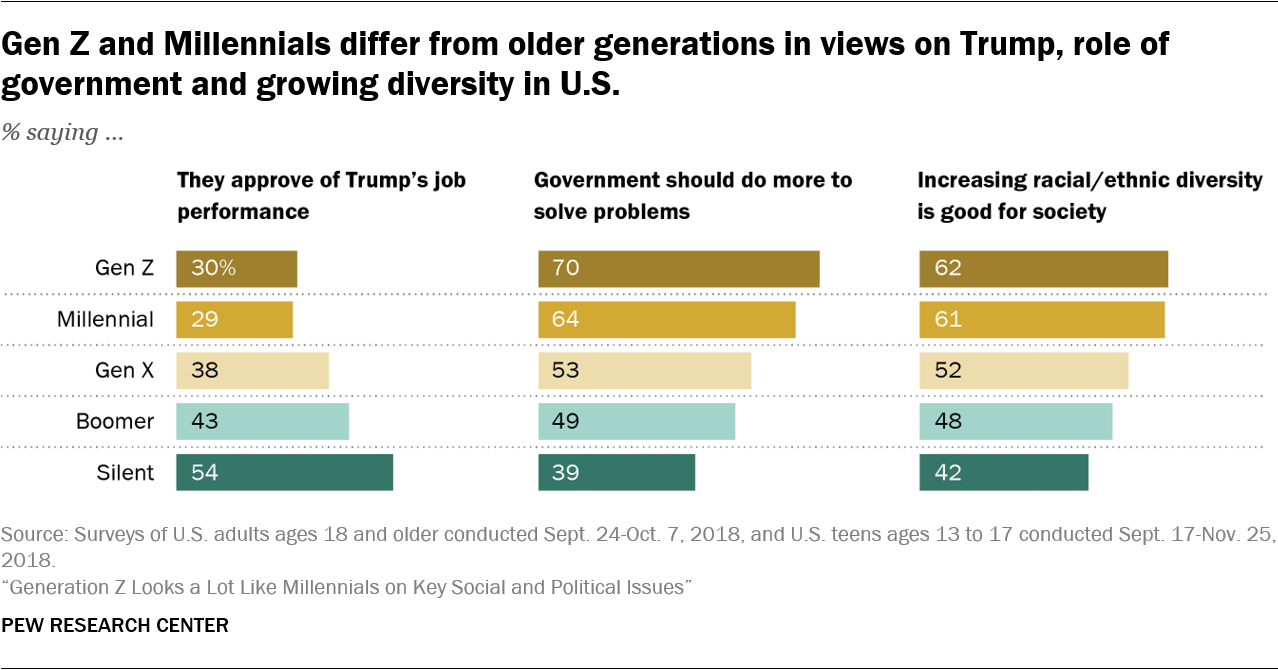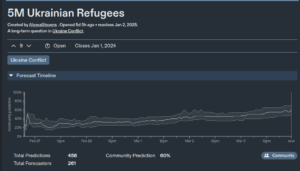Edward Dutton (AKA. Jolly Heretic) and J.O.A. Rayner-Hilles has a new book out: The Past is a Future Country: The Coming Conservative Demographic Revolution (2022). The summary is:

If you have been watching The Jolly Heretic over the past years, you will be familiar with just about everything. Dutton & Rayner-Hilles rely upon well known correlates of fertility to forecast where the future is going. These are plots like this one (US data):

Since we know that political ideology is heritable to some extent, we know that polygenic scores for conservatism (and religiousness) have been increasing since the 1970s or so. Despite this, the politics of USA has been largely going leftwards, especially since the great awokening (2015-present). This is somewhat of a paradox, one of many I’ve discussed in a prior post (Secular genetic-phenotype paradoxes: the Flynn effect and beyond). Still, it stands to reason that eventually conservatism will be victorious by their fertility advantage among the European (White) population. The level of conservatism in USA as a whole, then, depends heavily on the amount of left-wing immigration coming in. Hispanics are somewhat socialist and constitute the majority of new immigrants, along with East Asians and Europeans. I don’t know what the politics are for the Europeans incoming, but guessing this would be mainly libertarian-leaning tech workers. They are not very conservative, but neither are they woke. East Asians vote increasingly left-wing, though their personal politics is quite conservative. Party votes do not summarize people’s actual political ideology well because there’s a lot of ethnic voting:

Predicting a conservative outcome for the USA as a whole, then, depends heavily on various assumptions about future immigration levels, degree of assimilation for politics, and the time it takes for the conservative polygenic scores to increase enough to have notable effects.
Dutton & Rayner-Hilles basically think this is close, e.g.:
One of the more interesting ways our GSS simulation projects this is by examining what is happening with white women in America at the political extremes, based on extrapolated fertility, and by this we mean projecting on the assumption that white liberal women are having children that are exactly the same as them on all political opinions and go on to have exactly the same number of children, starting at the same age. Extremely liberal white females implode from 5% of the white female population in the year 2000 to below 2% during the 2040s. Conversely, extreme conservative representation among white women almost doubles in that same time period to about 7%. Whereas at the moment there is a little less than two far-left white women for every far-right white woman in the American working-age population, in just a couple of decades time, by heritable fertility, the USA would be an extraordinarily different place: there would be approximately four far-right white females for every one far-left white female.
There is some slight uptick in conservatives among ‘generation Z’ in one study, which they take as an early indicator:
As we’ve said, left-wing identification, or viewpoint, peaks among the Millennial generation and then there is a sudden ‘Generation Z’ reversal. This would be indicative of the notion of the West having reached ‘Peak Woke’ and Generation Z or ‘Zoomers’ reacting strongly against it. And indeed, many indicators illustrate this. Support for the Republican Party takes a sharp dip among Millennials and then sharply rises among Generation Z in the white male sample. A similar phenomenon can be seen, though it is less pronounced, in the white female sample. Those identifying as ‘extreme liberal’ peaks among Millennials and then collapses, based on the actual GSS data as they are—not our fertility extrapolations. The same is true of almost every other measure, but a note of caution must be adhered to in estimating the exact size of it, because at this stage the Generation Z sample in the GSS is relatively small. It remains the case for the moment that Generation Z is still dominated by a left-wing political point of view—just significantly less so than their older Millennial counterparts. Nevertheless, these political trends, that we will discuss, are consistent with other studies of Generation Z (Twenge, 2017). They really do appear to be reacting against the extreme leftist culture which has been the ‘norm’ during the era in which they were raised.
As far as I can tell, this right-wing generation Zoomer is mostly cope. Wikipedia has a big collection of statistics, showing stuff like:
According to a Politico survey, a 2020 Presidential election with only Generation Z voters would see Joe Biden win 51% of the popular vote, compared to Donald Trump’s 25%. However, almost half of Biden voters said they were voting against Trump rather than for Biden, reflected in lower approval ratings for both Joe Biden and Congressional Democrats than the general public.[25] In the 2020 Presidential election, 50% of those aged 18 to 29 voted, compared to 39% in the 2016 election. In addition, voter turnout among newly eligible voters (ages 18 and 19) was 46%, stronger than previous years. The increase has also been attributed to the expansion of postal voting due to the COVID-19 pandemic.[14]

The book takes it for granted that the dysgenic fertility patterns cannot be changed in the near future. There is in fact not even a discussion of the technology that could do this, embryo selection. The word “embryo” does not appear in the book. Because of their extreme doomerism, Dutton & Rayner-Hilles speculate that European conservatives without dysgenics will be forced to hide in various hold-outs, what they call Neo-Byzantiums:
In this book, we have, for brevity’s sake, often referred to the decline ‘of the West’ or the decline ‘of the developed world’ as a whole; as if it were going to all at once and everywhere decline into oblivion. But as we’ve argued in the previous sections concerning Neo-Byzantiums, barring any massive environmental disaster like an extreme solar storm or large volcanic eruption, this isn’t actually how it will work in practice. The decline of the first world will actually be a story of winner and loser countries, where in each subsequent round the winning countries will fight over the ever-dwindling amounts of quality human and resource capital. A ‘round’ might be a decade or so of time, and the countries that lose the round by virtue of seeing mass emigration of skilled labour and capital will see standards of living implode into that of the third world. Whilst this is going on, winner countries will themselves split up, due to the demographic and cultural factors previously discussed, and then intensely compete with each other in succeeding rounds. This game will go on for round after round, until there are only a few dozen or so small ‘winner’ countries scattered across the world. These will be the only countries that could still be considered to be belonging to the first world, by living standards. These winner countries will be the proto-Neo-Byzantiums, and whichever of them will survive the test of time, and come to flourish, and perhaps even gradually imperialize and dominate the rest of the world, will prove to be the true Neo-Byzantium. That said, we don’t necessarily expect there to be just one Neo-Byzantium, but we don’t imagine there will be many such countries surviving in the next century either.
Their bleak predictions mostly remind me of those made by environmentalists, who always forecast famine, lack of water etc. Horseshoe theory in action?

The religious conservativeness of the future depends whether environmental effects can keep having a larger socialist effect than the effects of genetics. Clearly, it can for the short term, in the same way that (most) IQ scores kept going up despite 100+ years of dysgenics and below average IQ immigration. I don’t know how long this can last, but perhaps it can last another 5 decades?
Read this book if you want to read the current conservative doomerism take on the near future. Be prepared to accept group selection and historical speculation. It’s not a bad book, but I would have liked to see more attempts at dealing with counter-arguments e.g. genetic technology to deal with dysgenics. They do their own forecasts based on GSS data, but I can’t make much sense of their plots. Clearly, they should have had someone with skills in data visualization re-do these. I basically ignored them when I read the book, and I guess so will most readers.
